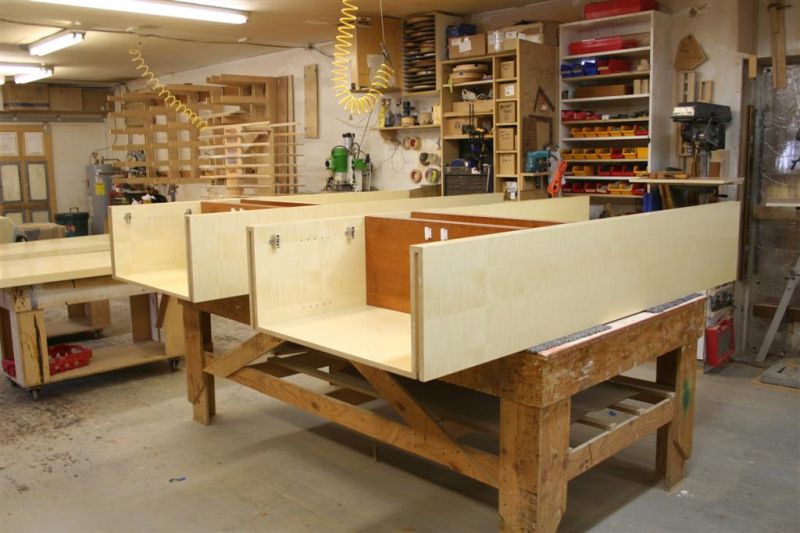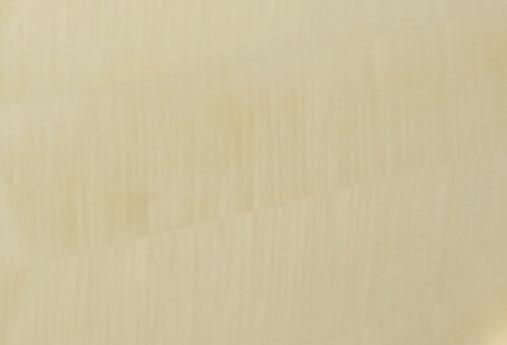Accentuating the Grain when Finishing Maple
A light blond shellac applied under a clear waterborne coating will help pop the grain and bring out the character of Maple. May 7, 2007
Question
I have a hardwood maple project (with the occasional maple ply sides) that I plan to finish with Target Superclear Polyurethane. I chose this finish because the client doesn't want the maple to go amber or straw colored, and I understand this finish will keep the maple as white as possible. But I have also heard that WB finishes don't induce the natural beauty of the wood like solvent finishes. Am I between a rock and a hard place or can someone suggest a formula/procedure to make the maple grain pop?
Forum Responses
(Finishing Forum)
From contributor J:
I spray on a coat of sealcoat before Target USL. It brings the grain out better than the waterbased alone and adds some warmth. It does amber the maple some, so you should do a test first. You could also flood with boiled linseed oil, wait a week or two, then shoot a coat of Superblonde dewaxed shellac and then the Target.
From contributor W:
For a water-white finish, the Target 9000 SuperClear is the right product to use. Popping the maple grain without amber/yellow effect should be done with the lightest blonde dewaxed shellac that you can find. Even a light amber shellac, like the Target/Oxford Ultima-WB Shellac, will work fine since maple has its own creamy color when finished. Stay away from linseed oil or tung oil; they will amber deeply over time. Make samples...
From contributor E:
Everything yellows over time, even laminate. The wood is just as much at fault as the resins in the clear coats. Butyrates are the resins with the least amount of yellowing. Sunflower resins are also very water white. Most UV absorbers will have some amber to them. So here's what I have done. I lightly stain the maple with a very light coat of white stain. It's so light, you can't even see it before you seal, but it helps not yellow the wood when it wets out. The finished product sometimes looks like unfinished maple and you can still see the grain.
From contributor D:
Try a weak dye (black maybe?) and sand it off before spraying. Some of it'll stay and "pop."
From contributor S:
We did some figured sycamore last year and I got some help right here on WOODWEB. We used Mohawk wiping stain 545-0027 Natural and cut it with mineral spirits. 1 part stain/6 parts thinner. Mixed and let sit for 5 minutes. The pigment separated from solvent and settled to bottom. Poured off thinner, put pigment sludge in recycle can. Wipe on wipe off stain, sealed with Chemcraft high solids vinyl sealer and topcoated with Chemcraft Plastofix Light.
Here's a picture from the shop. The figure popped really nice and oil/thinner combo barely, and I mean barely, changed the color. A sample with clear coat and one with this looked almost the same, but the grain pop was awesome.

Click here for higher quality, full size image
I zoomed in. Hopefully it comes out good enough on a computer screen and you can see how blonde it looks.

Click here for higher quality, full size image
From the original questioner:
All very illuminating and to the heart of the issue. Thanks. All have basically confirmed my fear that the WB finish alone will not accentuate the grain. I am going to make some tests, for me and the client's evaluation. I like the idea of the lightest blonde I can find (yes, we're still talking shellac here). Will thinning the Oxford/Target dewaxed shellac make it lighter or is there another light WB shellac option? I have experienced the "west coast delays" from Target and am curious about options.
From the original questioner:
Contributor S, I was replying as you were posting. Very interesting option. So you mix your concoction and use the part that doesn't settle. Can you spray it? And you say the resulting warming/yellowing was kept to a near non-existent minimum. Will finishing with a WB be a problem?
From contributor S:
We wiped on and off, but I don't see why you wouldn't be able to spray it on. Try it on a sample to see how it works. I don't see any problem with using a WB. It is just regular stain and mineral spirits used. It was cheap, quick, and easy. No extra steps involved or complicated setups. We used our normal stains and finishes and just thinned it to get the pigment out of stain.

